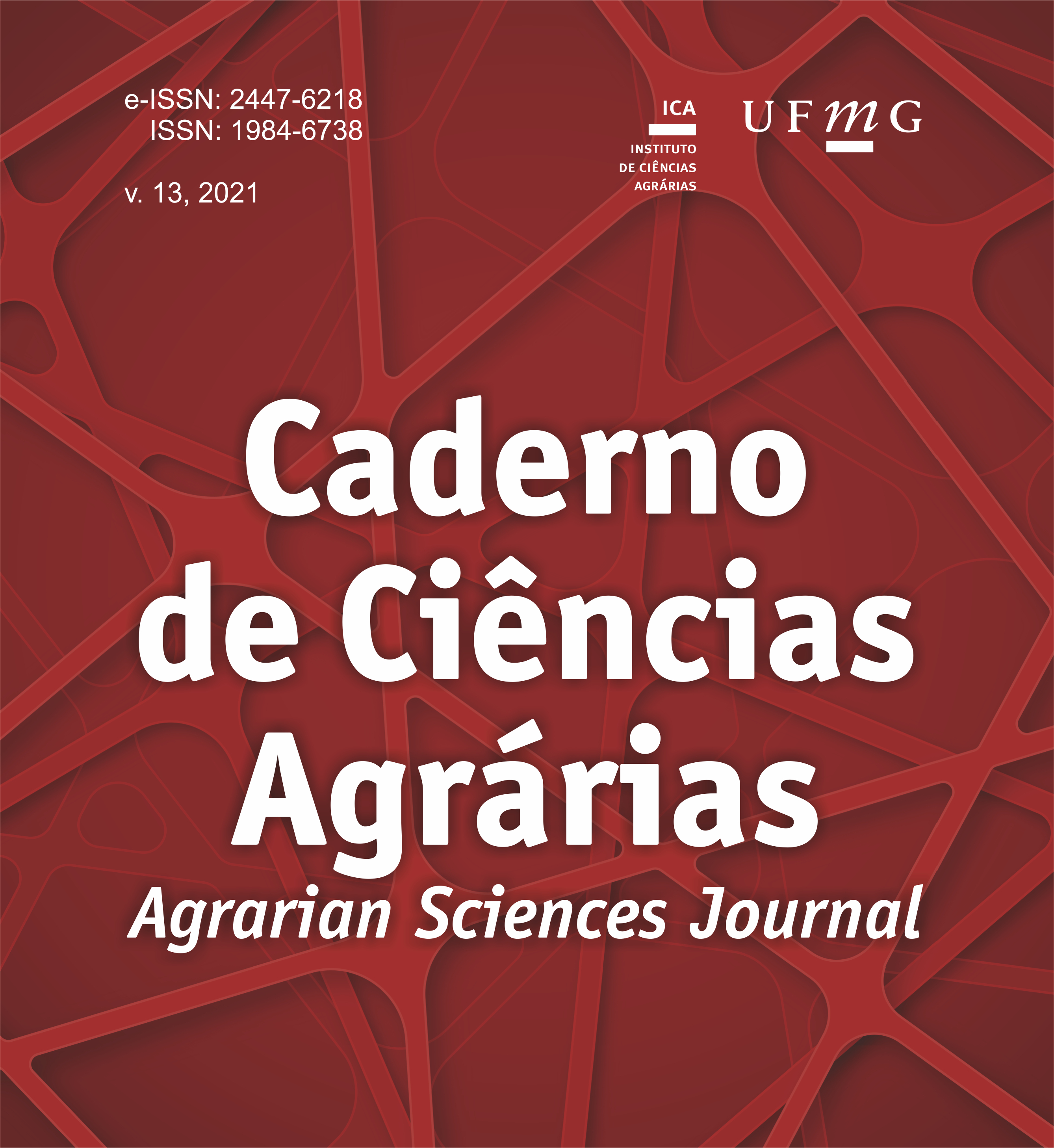The Spatial dynamics of agriculture in Brazil in 2008 and 2018
DOI:
https://doi.org/10.35699/2447-6218.2021.35385Keywords:
Exploratory spatial data analysis, Moran's I, Agricultural zoningAbstract
Given the great influence of agriculture on Brazilian society and economy, it is important to understand the spatial dynamics of different agricultural cultures to identify strategic producing regions, serving as a subsidy for public policies. Therefore, the purpose of this work is to carry out, through the exploratory analysis of spatial data, a comparative analysis of the spatial dependence of the production of different crops in Brazil, in the years 2008 and 2018. Using data from the Municipal Agricultural Production (PAM) by the Brazilian Institute of Geography and Statistics (IBGE), selecting the 12 crops with the highest total production values in 2018 (cotton, rice, banana, coffee, sugarcane, beans, tobacco, orange, cassava, corn, soybeans and tomato). A comparative analysis of cultures evidenced the formation of four groups, concerning the spatial dynamics of the high-high groupings in the two years studied. The first group is formed by cultures (cotton, rice, coffee, sugarcane, orange and tobacco) that tend to be concentrated in specific areas of the territory and did not show relevant changes in the clusters between the years under study, while the second group includes crops that expanded their areas between the two years (beans, corn and soybeans). The third group is formed by crops with smaller clusters and more spaced apart among themselves (banana and tomato). Finally, cassava was not included in any of the groups due to its dispersed production throughout the territory and also because it suffered a reduction in some regions.
Downloads
References
Almeida, E. Econometria Espacial Aplicada. Campinas: Alínea, 2012.
Almeida, E.; Perobelli, F.; Ferreira, P. Existe convergência espacial da produtividade agrícola no Brasil? Revista de Economia e Sociologia Rural, v. 46, n. 1, p. 31-52, 2008.
Andrade, A.; Monteiro, A.; Barcellos, C.; Lisboa, E.; Acosta, L. Almeida, M.; Brito, M.; Carvalho, M.; Santos, M.; Cruz, O.; Santos, R.; Flores, R.; Silva, S.; Santos, S.; Correia, V.; Souza, W. Introdução à estatística espacial para a saúde pública. Brasília: Ministério da Saúde, 2007.
Câmara, G.; Monteiro, A.; Fucks, S.; Carvalho, M. Análise espacial e geoprocessamento. In: Druks, S.; Carvalho, M.; Câmara, G.; Monteiro, A. (Ed.). Análise espacial de dados geográficos. Brasília: Embrapa, 2004.
Cunha, G.; Assad, E. Uma visão geral do número especial da RBA sobre zoneamento Agrícola no Brasil. Revista Brasileira de Agrometeorologia, v. 9, n. 3, p. 377-385, 2001.
Instituto Brasileiro de Geografia e Estatística, IBGE. 2019. Produção agrícola municipal. Sistema IBGE de Recuperação Automática – SIDRA, Tabela 5457, 2019. Disponível em: https://sidra.ibge.gov.br/tabela/5457
Perobelli, F.; Almeida, E.; Alvim, M.; Ferreira, P. Produtividade do setor agrícola brasileiro (1991-2003): uma análise espacial. Nova Economia, v. 17, n.1, p. 65-91, 2007.
Rossetti, L. Zoneamento agrícola em aplicações de crédito e securidade rural no Brasil: aspectos atuariais e de política agrícola. Revista Brasileira de Agrometeorologia, v. 9, n. 3, p. 386-399, 2001.
Santos, W.; Martins, J. O zoneamento agrícola de risco climático e sua contribuição à agricultura brasileira. Revista de Política Agrícola, v. 25, n. 3, p. 73-94, 2016.
Silva, O.; Wander, A. O feijão-comum no Brasil: passado, presente e futuro. Embrapa Arroz e Feijão, 2013.
Souza, A.; Reis, J.; Raymundo, J.; Pinto, R. Estudo da produção de milho no Brasil. South American Development Society Journal, v. 4, n. 11, p. 182, 2018.
Trentin, R.; Modolo, A.; Vargas, T.; Campos, J.; Adami, P.; Baesso, M. Soybean productivity in rhodic hapludox compacted by the action of furrow openers. Acta Scientiarum. Agronomy, v. 40, p. 1-9, 2018.
Wander, A.; Silva, O. Rentabilidade da produção de arroz no Brasil. Embrapa Arroz e Feijão, In: Campos, S.; Torres, D.; Ponchio, A.; Barros, G., Sustentabilidade e sustentação de alimentos: o desafio da rentabilidade na produção. Brasília, DF: Centro de Gestão e Estudos Estratégicos, 2014.
Published
How to Cite
Issue
Section
License
Copyright (c) 2021 Agrarian Sciences Journal

This work is licensed under a Creative Commons Attribution-NonCommercial-NoDerivatives 4.0 International License.
Authors who publish in this journal agree to the following terms:
The Copyright for articles published in this journal follow authorship. The articles are open access, with their own attributions, in educational and non-commercial applications.
The journal reserves the right to make regulatory, orthographic and grammatical changes in the originals, with the aim of maintaining the standard language and the credibility of the vehicle. It will respect, however, the writing style of the authors.
Changes, corrections or suggestions of conceptual order will be forwarded to the authors, when necessary. In such cases, the articles, once appropriate, should be submitted for further consideration.
The opinions issued by the authors of the articles are their sole responsibility.







